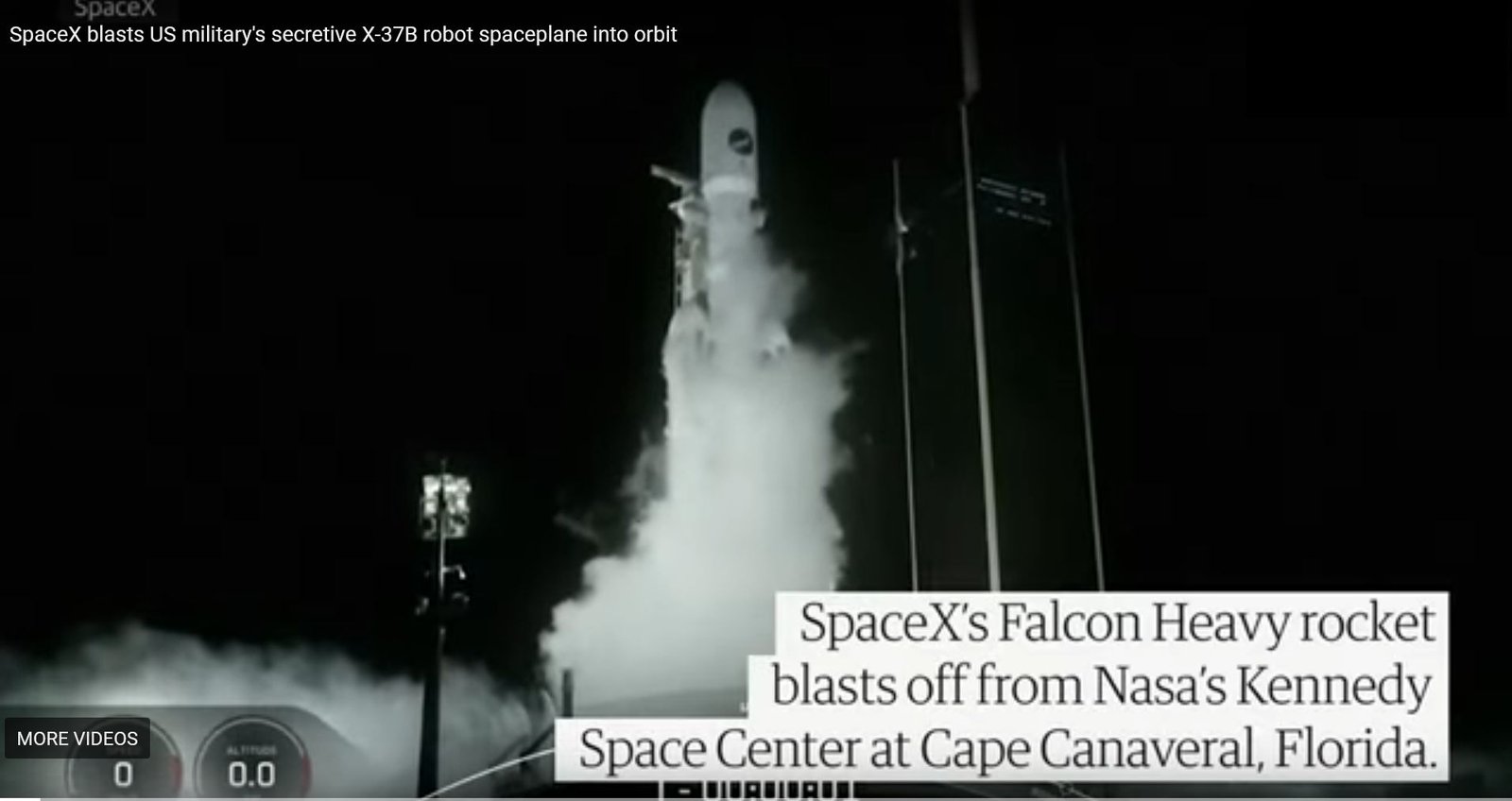
By Guardian staff and agencies,
Published by The Guardian, 29 December 2023
Launch of plane, which will carry out classified experiments, marks another development in US-China space rivalry
The US military’s secretive X-37B robot spaceplane has blasted off from Florida on its seventh mission, the first launched atop a SpaceX Falcon Heavy rocket capable of delivering it to a higher orbit than ever before.
As on previous missions, there’s no one on board the reusable plane, which resembles a mini space shuttle and carries classified experiments.
The Falcon Heavy, composed of three rocket cores strapped together, took off from Nasa’s Kennedy Space Center at Cape Canaveral more than two weeks late because of technical issues.
Three earlier countdowns were aborted due to poor weather and unspecified technical issues, leading ground crews to roll the spacecraft back to its hangar before proceeding with Thursday’s flight.
The launch came two weeks after China’s robot spaceplane, known as the Shenlong, or “Divine Dragon,” was launched on its third mission to orbit since 2020, adding a new twist to the growing US-Sino rivalry in space.
The Pentagon has disclosed few details about the X-37B mission, which is conducted by the US Space Force under the military’s national security space launch programme.
Thursday’s launch marked the seventh flight of an X-37B, which has logged more than 10 years in orbit since its debut in 2010.
The last flight, the longest one yet, lasted two and a half years before ending on a runway at Kennedy a year ago.
The Pentagon has not said how high the spaceplane will fly this time. But in a statement last month, the air force rapid capabilities office said mission No. 7 would involve tests of “new orbital regimes, experimenting with future space domain awareness technologies.”
The X-37B also is carrying a Nasa experiment to study how plant seeds are affected by prolonged exposure to the harsh environment of radiation in space. The ability to cultivate crops in space has major implications for keeping astronauts nourished during future long-term missions to the moon and Mars.
China’s equally secretive Shenlong was carried to space on 14 December by a Long March 2F rocket, a launch system less powerful than SpaceX’s Falcon Heavy and believed to be limited to delivering payloads to low-Earth orbit.
Still, Space Force General B Chance Saltzman told reporters at an industry conference earlier this month he expected China to launch Shenlong at around the same time as the X-37B flight in what he suggested was a competitive move.
“It’s no surprise that the Chinese are extremely interested in our spaceplane. We’re extremely interested in theirs,” Saltzman said, according to remarks published in Air & Space Forces Magazine, a US aerospace journal.
“These are two of the most watched objects on orbit while they’re on orbit. It’s probably no coincidence that they’re trying to match us in timing and sequence of this,” he said.
The planned duration of the latest X-37B mission has not been made public, but it will presumably run until June 2026 or later, given the prevailing pattern of successively longer flights.
Built by Boeing, the X-37B resembles Nasa’s retired space shuttles but they’re just one-fourth the size at 29 feet (9 metres) long. No astronauts are needed; the X-37B has an autonomous landing system.
They take off vertically like rockets but land horizontally like planes, and are designed to orbit between 150 miles and 500 miles (240 kilometres and 800 kilometres) high.
See: Original Article





